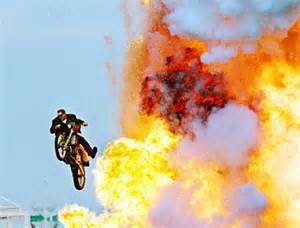Lately I’ve been helping emerging author’s by reading and reviewing their books. At the same time, I’ve been editing my first series of books, so that these can be published as a single novel. As a result, I’ve noticed a common mistake in both my early writing and writing that I’ve been reviewing.
The mistake occurs during action sequences. The mistake is simple: new authors tend to use sentences that are too long, words that are too big, and phrases that are too–well, numerous.
I’m not sure why this happens. Looking back at early drafts of my own writing, I see it there, but I don’t remember what I was thinking at the time. Maybe I wasn’t thinking. Maybe I was writing the action sequence in the same way that I wrote everything else.
So, now that I know better, I have a few tips for those of you in the midst of writing an action sequence. Here they are:
- Use simple sentences.
- Don’t be afraid of sentence fragments or even one word sentences/fragments
- Don’t fill in every gruesome detail. The reader can do that in his or her head. (A tip: write it out. Leave it alone for a month and then look back at it. When you do, delete everything you don’t need)
- Don’t be afraid of repetition. New writers sometimes think that they need a synonym for everything. But during an action sequence the words slip away. The reader isn’t hearing each word. They should be seeing the action.
- Don’t use big words. These slow up the action. The faster the reader can read the section, the faster the action moves.
Think about it: Action moves quickly. So you want your reader to be reading your action quickly. When this happens, the content and form are united working towards the same exact purpose: the showing of an action sequence.
Down below I’ve included a brief excerpt of my very first book. I’ve italicized the paragraphs that don’t follow my advice above. Notice how these slow up the action and take away from the unity of the scene. Check it out:
from Farmers and Cannibals
Cain was up and over the desk. Frank’s massive body crashed to the floor. With his left, metallic hand, Cain struck Frank once in the nose, breaking it.
No time to react. The grip of the metallic hand unbreakable.
Before this moment, Frank, behind his desk was unreachable, impervious to the hand of punishment. A God, Frank sat deciding the fates of the men who lived in the world he created.
But presently, Frank was nothing but a man. Regaining some consciousness, still able to fight for the relative insignificance of his own mortal life, Frank pounded Cain’s head with his own left hand. With all his human muscle, he hammered with no effect.
Frank pulled at the metallic arm with all of his strength. The shirt sleeve ripped off entirely, but the arm didn’t move, the hand gripped tighter.
Frank’s hands fell to the floor. Cain held on. He felt for a pulse. None.
Let me know your thoughts on action sequences by commenting below. Feel free to send me an action sequence that you’re working on. I’m happy to give critique.
Thanks for reading,
EJO

Leave a comment